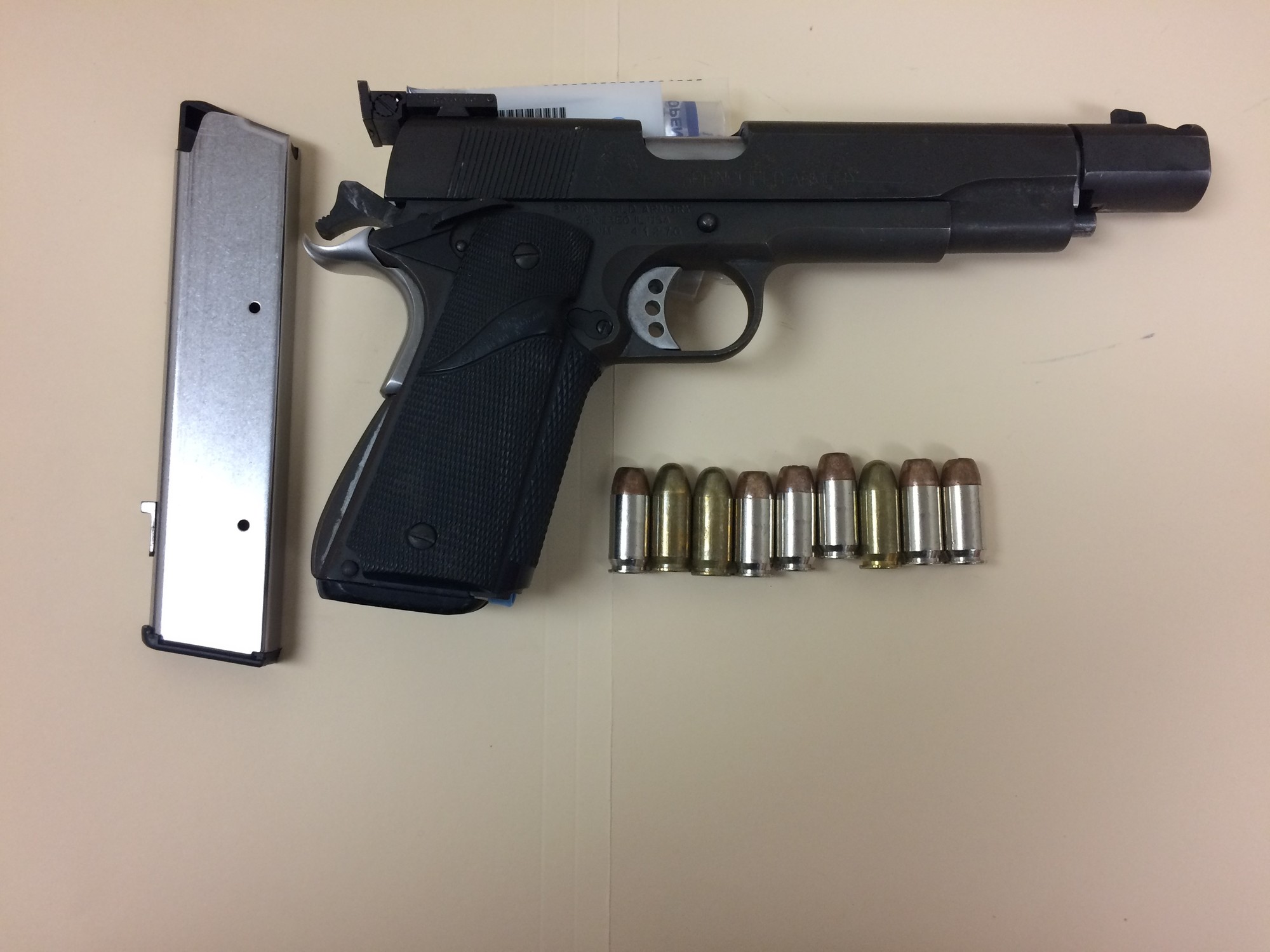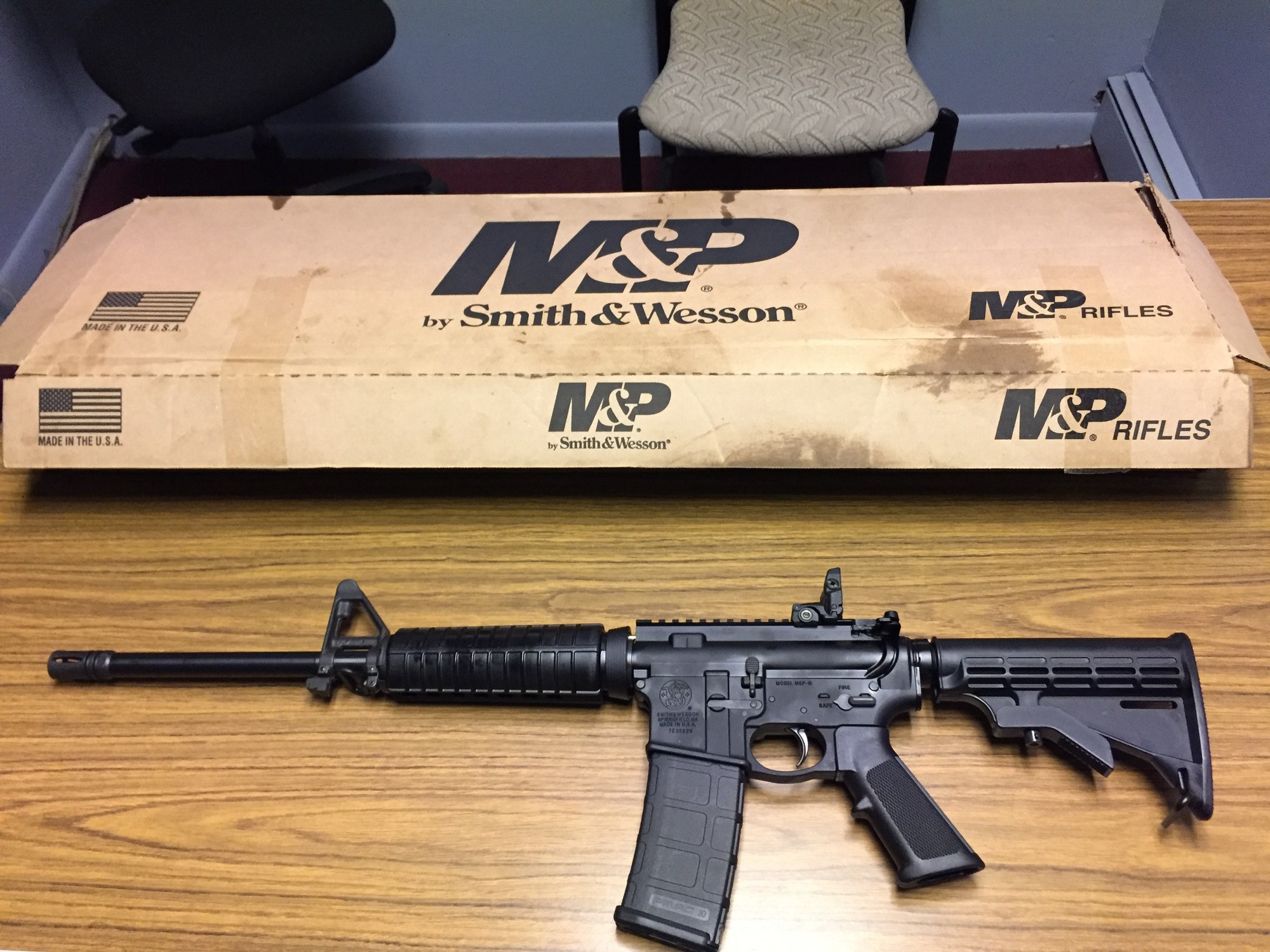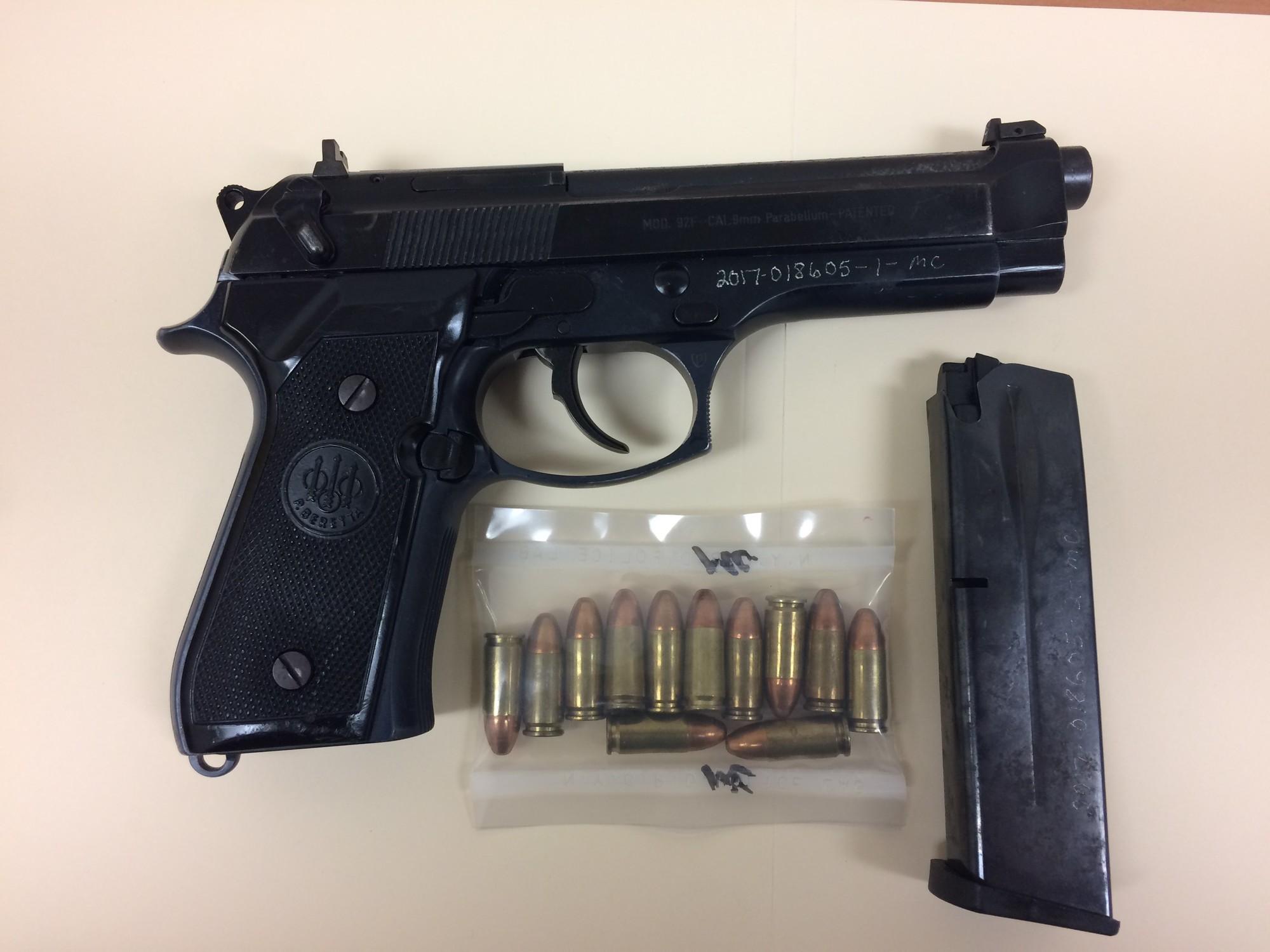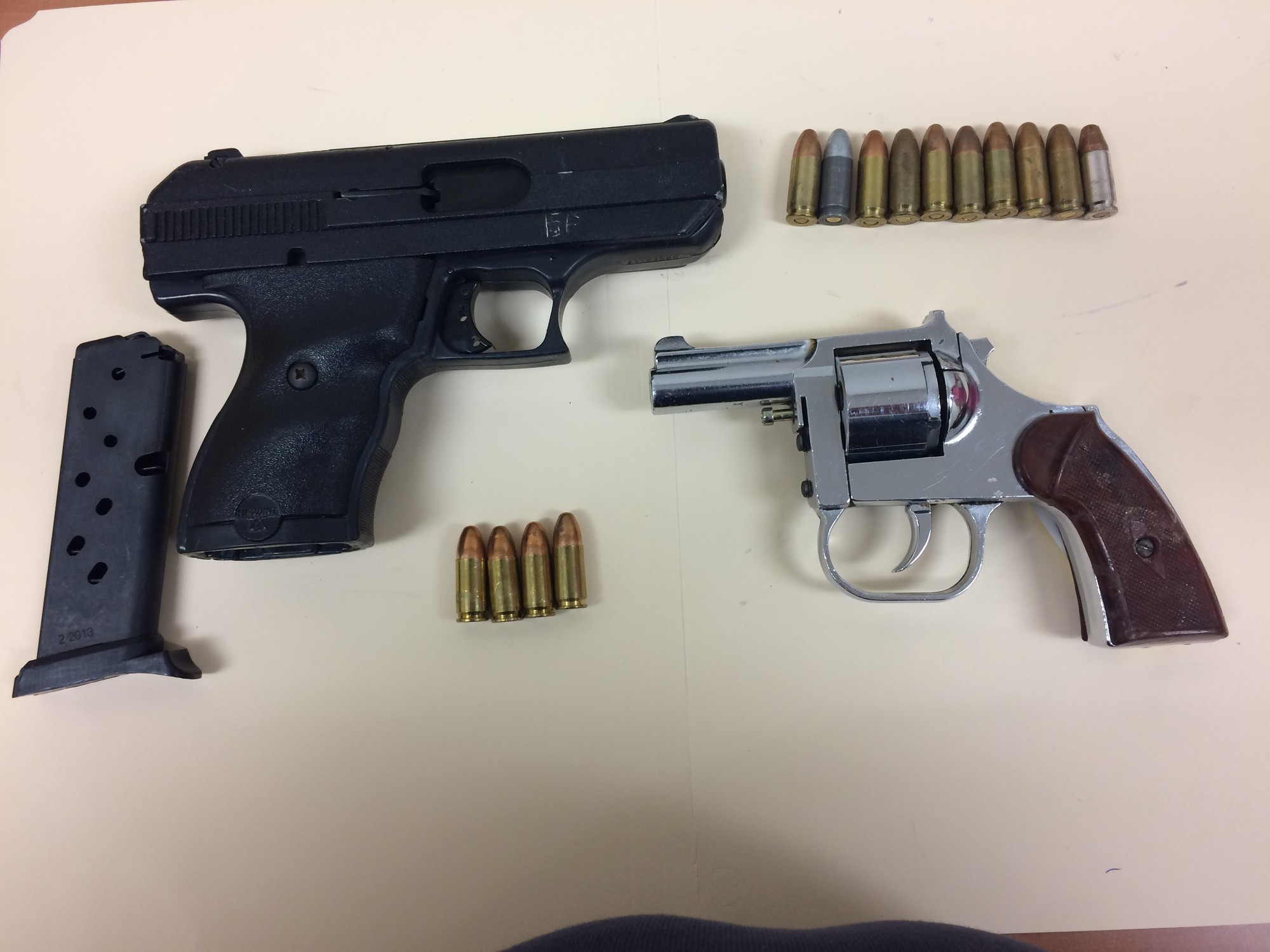Winter Storm Watch in effect for New York City Saturday afternoon through Sunday evening
Snow and a wintry mix of sleet, freezing rain and rain are possible, with frigid temperatures to end the weekend
The New York City Emergency Management Department today issued a hazardous travel advisory for Saturday evening through Monday, January 21. The National Weather Service (NWS) has issued a Winter Storm Watch for New York City in effect from noon Saturday through 6 p.m. Sunday, January 20. A Winter Storm Watch means there is potential for significant snow, sleet or ice accumulations that may cause difficult travel conditions. New Yorkers should prepare for snow covered roads and limited visibility. Commuters are advised to avoid travel Saturday night through Monday, as roads will be dangerous.
According to the latest NWS forecast, light snow may develop Saturday afternoon, becoming heavier Saturday evening. Snow will continue overnight, transitioning to a wintry mix of sleet and freezing rain. By sunrise Sunday, the wintry mix may transition to moderate to heavy rain, continuing through the afternoon. Rain is expected to taper off mid to late Sunday afternoon, though a lingering shower is possible. A total of 2 to 6 inches of snow accumulation is possible with this event, with higher totals of up to 7 inches possible in northern parts of the city.
Temperatures are also expected to plummet throughout the day on Sunday, according to NWS. The steady drop in temperatures will cause any liquid on the roads to flash freeze, making travel extremely dangerous. New Yorkers are advised to avoid travel on Sunday. Temperatures begin to drop on Sunday from the 30s to single digits, with wind chill values as low as between zero and -10 degrees. Temperatures Monday will be in the teens, with sub-zero wind chill values. Wind chill values Monday night will be as low as -10. High winds are also in the forecast Sunday, with gusts up to 45 mph.
A Coastal Flood Watch is also in effect for southern Queens from late Saturday night through Sunday morning. A Coastal Flood Watch means that conditions favorable for flooding are expected to develop. Some roads and low-lying property including parking lots, parks, lawns, and homes or businesses near the waterfront may experience flooding, and widespread to moderate coastal flooding is possible. Coastal residents should be alert for later statements or warnings, and take action to protect property.
“New York City Emergency Management is working closely with the National Weather Service and key city agencies to monitor and coordinate the City’s preparations ahead of this weekend’s storm,” said NYC Emergency Management Commissioner Joseph Esposito. “The combination of snow, sleet, freezing rain, and the quick drop in temperatures will cause extremely dangerous road conditions. We are advising all New Yorkers to avoid all unnecessary travel and stay off the roads on Saturday through Monday.”
“Our Department is completely ready for this weekend’s winter storm,” said Sanitation Commissioner Kathryn Garcia. “Our salt spreaders are fully loaded and ready to go, and our plows are ready to hit the streets once about two inches of snow has fallen. Additionally, our Sanitation Workers are working 12 hour “split shifts,” ensuring we have coverage around the clock. Importantly, we encourage drivers to stay off the roads to allow us to fully treat the streets around the city.”
“Hundreds of DOT staff are working closely with our sister agencies in preparation for this weekend’s winter storm,” said Department of Transportation Commissioner Polly Trottenberg. “The combination of snow and dropping temperatures will make road conditions extremely dangerous. While DOT strives to keep New Yorkers moving safely, our best advice to anybody who must travel this weekend is to leave their cars at home and use public transportation.”
“Cold temperatures and wet winter weather can be dangerous for anyone, but particularly individuals at higher risk for hypothermia, such as those who are homeless, those without heat at home, and those who drink heavily or use drugs and become incapacitated outdoors,” said Health Commissioner Dr. Oxiris Barbot. “Spend as much time indoors as possible this weekend and if you must go outside, please dress warmly. If you are without heat at home, call 311. Stay alert for signs of hypothermia, like intense shivering or dizziness, and if you experience them, seek medical attention or call 911.”
NYC Emergency Management will continue to work closely with NWS and key city agency to monitor and coordinate preparations for the weekend’s storm. The City’s Emergency Operations Center (EOC) will open Saturday afternoon. Key agencies and partners will staff the EOC to coordinate any response to potential impacts associated with the forecast.
NYC Emergency Management
· NYC Emergency Management is hosting daily conference calls with City and state agencies to coordinate the City’s preparations for the weekend’s storm.
· NYC Emergency Management continues to update elected officials with the latest information regarding the weekend’s storm.
· LinkNYC is displaying winter storm messaging.
· NYC Emergency Management has issued Advance Warning System (AWS) messaging to partners organizations that service New Yorkers with disability and access and functional needs.
· NYC Emergency Management has activated the Downed Tree Task Force. This multi agency task force is responsible for coordinating the response to a large downed tree event.
· NYC Emergency Management has activated the Tow Truck Task Force, a NYPD unit assigned to mitigate vehicles blocking roads for critical response vehicles.
· New York City Emergency Management will activate the Emergency Operations Center at 4 p.m. Saturday through Monday.
· NYC Emergency Management has activated the City’s Flash Flood Emergency Plan to ensure a quick, effective, and coordinated preparation and response to any flash flood events. NYC Emergency Management works closely with NYPD, FDNY, Department of Environmental Protection, Department of Sanitation, Department of Transportation, Department of Parks and Recreation, and the Metropolitan Transportation Authority to mitigate the impact of flash floods. These actions include pre-inspecting and clearing catch basins in vulnerable locations throughout the city. New Yorkers are encouraged to report clogged catch basins and areas of standing water to 311.
Department of Sanitation
· The New York City Department of Sanitation (DSNY) is readying 695 salt spreaders across the five boroughs. DSNY will activate PlowNYC and will dispatch 1600 plows if more than two inches of snow accumulates on roadways.
· DSNY will assign 2,300 workers to split 12-hour shifts through the weekend.
· Residents should follow their normal collection schedule and place their material on the curb. There may be delays in collection during snow operations.
Department of Transportation
· DOT’s Bridges Division will pre-deploy crews to East River Bridges.
· Crews will pre-salt and monitor Municipal Parking lots, and will address conditions as needed.
· DOT’s Arterial, Parking and Citywide Concrete Units, will pre-salt and monitor pedestrian overpasses, muni lots and step streets.
· Crews from JC Decaux have pre-treated all city bus shelters and are monitoring bus shelters citywide.
· DOT’s Ferry Division will pre-salt and clear walkways at the ferry terminal. Ferry vessels are currently expected to operate on a normal schedule, but passengers are advised to allow extra time for travel.
· DOT will monitor conditions on the citywide Transportation network at the Joint Transportation Management Center with State DOT and NYPD, and coordinate efforts to address any issues.
Economic Development Corporation/NYC Ferry
· NYC Ferry service is currently anticipated to operate on a normal schedule this weekend, including Monday, January 21 in observance of Martin Luther King, Jr. Day. However, due to impending winter storm conditions, riders are advised to prepare for possible cancellations or delays. Please allow for extra travel time and check the NYC Ferry app and website for real-time updates. You can also sign up for push notifications by selecting your preferred routes within the notification section of the NYC Ferry app.
Department of Parks and Recreation
· NYC Parks is readying its plow vehicles, salt spreaders, snow blowers and brushes for snow removal as needed. Parks prioritizes snow removal in areas like park perimeters and commuter hubs; once perimeter sidewalks are complete, Parks will clear interior pathways.
· NYC Parks is readying forestry staff to respond to any tree emergencies.
NYCHA
NYCHA Heat Staff work regularly from 5 a.m. to 10 p.m. seven days a week. The agency has also activated a Heat Desk to have staff on site 24/7 to respond to any service interruptions citywide through the end of Heating Season. In preparation for this weekend, NYCHA has taken additional measures.
· Increasing heating response teams to 14, with two shifts operating from 8 a.m. to midnight on Sunday, one shift from midnight to 5 a.m. on Monday, with a regular heat staff schedule from 5 a.m. to 10 p.m. for the Martin Luther King, Jr. holiday. The teams will be stationed in every borough and will be dispatched across the City as needed;
· Increasing coverage by third-party vendors that now manage several of NYCHA’s heating plants across the city;
· Skilled trades staff — including plumbers and electricians — will be available to respond to more advanced or technical needs for service restoration; and
· Opening 12 warming centers across the city on Monday for residents experiencing heat issues while staff work on repairs.
Department of Environmental Protection
· The Department of Environmental Protection will deploy resources to assist the NYC Department of Sanitation with snow removal and will pre-position staff to ensure critical wastewater treatment and drinking water functions continue without interruption.
· Department of Environmental Protection crews will be pre-inspecting catch basins in flood prone areas to ensure they are free of debris and draining properly. Additional crews will be in the field on Sunday to ensure catch basins are not blocked by snow. New Yorkers are encouraged to help keep catch basins clear to allow for proper roadway drainage. If a catch basin is blocked or not draining residents should report it to 311.
Department of Buildings
The Department of Buildings (DOB) has issued a weather advisory to remind property owners, contractors, and crane operators to take precautionary measures and secure their construction sites, buildings, and equipment during high winds, with forecast wind gusts up to 40 miles per hour and the potential for ice accumulations on cranes and worksites beginning Saturday, January 19 through Monday, January 21. The department will perform random spot-check inspections of construction sites around the city. If sites are not secured, the department will take immediate enforcement action — issuing violations and Stop Work Orders, where necessary. To safeguard construction sites, builders, contractors, and developers should take all precautionary measures including but not limited to the following:
· Tie down and secure material and loose debris at construction sites.
· Cover electrical equipment from exposure to the weather.
· Store loose tools, oil cans, and extra fuses in a toolbox.
· Secure netting, scaffolding, and sidewalk sheds.
· Suspend crane operations and secure crane equipment when wind speeds reach 30 mph or greater.
· Suspend hoist operations and secure exterior hoists when wind speeds reach 35 mph or greater, unless manufacturer specifications state otherwise.
· Brace and secure construction fences.
· Call 911 if there is an emergency on a construction site.
Buildings Bulletin 2015-029 outlines the requirements for vertical netting, debris netting and material-fall protection devices at buildings and construction sites. To view this bulletin, click here.
To secure a building, property owners should take all precautionary measures including but not limited to the following:
· Bring inside loose, lightweight objects such as lawn furniture, potted plants, garbage cans, garden tools, and toys.
· Anchor objects that would be unsafe outside, such as gas grills or propane tanks.
· Close up and secure patio umbrellas.
· Secure retractable awnings.
· Remove aerial antennas and satellite television dishes.
· Pay attention to local weather forecasts and bulletins issued by the National Weather Service on local radio stations.
· Beware of falling braches if you are near trees.
Housing Preservation and Development
Residential building owners are legally required to maintain indoor temperatures at 68 degrees when the temperatures fall below 55 degrees outside during the day and a minimum of 62 degrees indoors overnight, regardless of outdoor temperatures. If an apartment lacks appropriate heat, a tenant should first attempt to notify the building owner, managing agent or superintendent. If heat is not restored, the tenant should register an official complaint via 311. Tenants can call 311, visit 311 ONLINE at www.nyc.gov/311, or use the 311Mobile app (on Android and iOS devices) to file a complaint. Hearing-impaired tenants can register complaints via a Touchtone Device for the Deaf TDD at (212) 504-4115.The center is open 24-hours a day, seven-days a week.
The Department of Housing Preservation and Development (HPD) will take measures to ensure that the building owner is complying with the law. This may include contacting the building’s owner and/or sending an inspector to verify the complaint and issue a violation directing the owner to restore heat and hot water if appropriate. If the owner fails to comply and does not restore service, HPD may initiate repairs through its Emergency Repair Program and bill the landlord for the cost of the work. HPD may also initiate legal action against properties that are issued heat violations, and owners who incur multiple heat violations are subject to litigation seeking maximum litigation penalties and continued scrutiny on heat and other code deficiencies.
Take measures to trap existing warm air and safely stay warm until heat returns, including:
Insulate your home as much as possible. Hang blankets over windows and doorways and stay in a well-insulated room while the heat is out.
Dress warmly. Wear hats, scarves, gloves, and layered clothing.
If you have a well-maintained working fireplace and use it for heat and light, be sure to keep the damper open for ventilation. Never use a fireplace without a screen.
If the cold persists and your heat is not restored call family, neighbors, or friends to see if you can stay with them.
Do not use your oven or fuel-burning space heaters to heat your home. These can release carbon monoxide, a deadly gas that you cannot see or smell.
Open your faucets to a steady drip so pipes do not freeze.
Code Blue
A Code Blue Weather Emergency notice is issued when the temperature is forecast to drop to 32 degrees Fahrenheit or less between 4 p.m. and 8 a.m., including National Weather Service calculations for wind chill values. No one who is homeless and seeking shelter in New York City during a Code Blue will be denied. Should you see an individual who appears to be homeless and in need out in the cold, please call 311 and an outreach team will be dispatched to offer assistance. During Code Blue Weather emergencies, experienced outreach teams work to connect homeless New Yorkers with the following resources:
· Shelters: During a Code Blue, shelter is available system-wide to accommodate anyone who is reasonably believed to be homeless and is brought to a shelter by outreach teams. Accommodations are also available for walk-ins.
· Drop-in centers: All drop-in centers are open 24-hours per day, including when Code Blue procedures are in effect, and will assist as many people as possible for the duration of the emergency. Drop-in staff and the dedicated outreach teams they work closely with each day can also make arrangements for homeless individuals at other citywide facilities.
· Safe havens and stabilization beds: Chronically homeless individuals may be transported directly to these low-threshold housing programs.
· Street homeless outreach: Teams will contact vulnerable individuals on their Code Blue Priority Lists a minimum of once every four (4) hours beginning at 8 p.m. during Code Blue Alerts and once every two (2) hours beginning at 8 p.m. for Enhanced Code Blue Alerts to encourage them to accept services, including transportation to a shelter placement. DSS coordinates borough-level Code Blue efforts directly with partner City agencies, including but not limited to NYPD, DSNY, and the Parks Department.
Cold weather can cause or worsen health problems. Certain individuals, including the unsheltered homeless, people with disabilities and those with access and functional needs are at an increased risk for injuries, illness or death. Others at an increased risk also include people who drink heavily or use drugs and become incapacitated outdoors, or those who live in homes without heat, and:
· Are 65 years of age or older.
· Are infants.
· Have certain medical conditions such as heart or lung disease, high blood pressure, diabetes.
· Have serious mental health conditions or developmental disabilities.
To learn more about winter weather safety, visit the Health Department’s interactive online infographic.
Prolonged exposure to cold can lead to frostbite – which often results in red and painful or pale skin – and hypothermia. Symptoms of hypothermia include:
· Intense shivering
· Dizziness
· Trouble speaking
· Lack of coordination
· Sluggishness or drowsiness
· Confusion
· Shallow breathing
If you see symptoms of hypothermia or frostbite, call 911 and follow instructions, or go to the emergency room.
Safety Tips
· New Yorkers are advised to avoid unnecessary travel. If you must travel, use mass transit where possible.
· Small accumulations of ice can be extremely dangerous to motorist and pedestrians. Bridges and overpasses are particularly dangerous because they freeze before other surfaces.
· If you drive, use extra caution. Vehicles take longer to stop on snow and ice than on dry pavement.
· Four-wheel drive vehicles may make it easier to drive on snow-covered roads, but they stop less quickly than other vehicles.
· Use major streets or highways for travel whenever possible.
· Know your vehicle’s braking system. Vehicles with anti-lock brakes require a different braking technique than vehicles without anti-lock brakes in snowy conditions.
· If you are driving and begin to skid, ease your foot off the gas and steer in the direction you want the front of the car to go. Straighten the wheel when the car moves in the desired direction. If you have an anti-lock braking system (ABS), apply steady pressure to the brake pedal. Never pump the brakes on an ABS equipped vehicle.
· Try to keep your vehicle’s gas tank as full as possible.
· Pedestrians should exercise caution and avoid slippery surfaces; some ice may not be visible. Wear sturdy boots that provide traction to reduce slipping. Use handrails when using stairs.
· Seniors should take extra care outdoors to avoid slips and falls.
· Have heightened awareness of cars, particularly when approaching or crossing intersections.
· Be careful when shoveling snow. Follow your doctor’s advice if you have heart disease or high blood pressure. Cold weather puts an extra strain on the heart.
· If you go outdoors, wear dry, warm clothing and cover exposed skin. Keep fingertips, earlobes, and noses covered. Wear a hat, hood, scarf, and gloves.
· Shivering is an important first sign that the body is losing heat. Shivering is a signal to return indoors.
· Be safe at work. Workers who spend a lot of time outdoors are at risk for cold-related health impacts. If you are an employer, implement safe work practices, provide appropriate protective equipment, and train workers on how to stay safe during cold and winter weather.
· Limit alcohol intake. Drinking alcohol may make you feel warmer but it causes your body to lose heat faster. Alcohol also impairs your judgment, which limits your ability to take appropriate precautions or remove yourself from a dangerously cold environment in time. As a result, alcohol actually increases your chances of hypothermia and frostbite.
Power Outages
· To prepare for a possible power outage, charge cell phone batteries, gather supplies, and turn your refrigerator and freezer to a colder setting. If you lose power, items that need refrigeration will stay cooler for longer.
· If your power goes out, disconnect or turn off appliances that would otherwise turn on automatically when service is restored. If several appliances start up at once, the electric circuits may overload.
· Make sure your flashlights and any battery-operated radios or televisions are working. Keep extra batteries.
· If you lose power & have a disability, access and functional needs or use Life Sustaining Equipment (LSE) & need immediate assistance, dial 911.
· Do not use generators indoors.
· Heavy accumulations of ice can bring down trees and topple utility poles. Ice can disrupt communications and power.
For more safety tips, visit NYC.gov/EmergencyManagement. New Yorkers are also encouraged to download the Notify NYC mobile application, which is available for free download from iTunes or Google Play. Notify NYC is the City’s free emergency notification system. Through Notify NYC, New Yorkers can also receive phone calls, text messages, and/or email alerts about weather conditions and other emergencies. To learn more about the Notify NYC program or to sign up, visit NYC.gov/NotifyNYC or call 311. You can also follow @NotifyNYC on Twitter.






